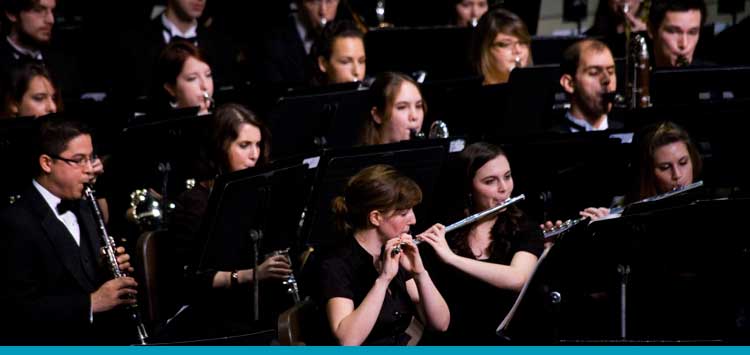
The Hofstra Wind Ensemble and Symphonic Band filled the John Cranford Adams Playhouse with the music of Johann Sebastian Bach, Leonard Bernstein and others on Dec. 3, under the direction of James McCrann and Peter Boonshaft. With a mix of classics like Bach’s “Toccata and Fugue in D Minor” and more modern compositions that included “An American Elegy” by Frank Ticheli, both ensembles gave the audience an impressive performance.
The highlight of the first half of the concert was the Wind Ensemble’s rendition of “Overture to ‘Candide,’” by Bernstein. Overshadowed by “West Side Story,” the lesser-known Bernstein Broadway work was rewritten by the composer in 1989 as a concert band piece. Including the two main themes of the musical, the performers played the overture with an energy that was perfect for opening the show – which was what Bernstein had intended it to be for.
The Symphonic Band opened the second half with “Kirkpatrick Fanfare” by Andrew Boysen, but the most impressive and memorable pieces came at the end of the program. Ticheli’s “An American Elegy” was written in memory of the people who lost their lives in the Columbine High School shooting in 1999. Ticheli had wanted to include the melody of the school’s alma mater before discovering that they didn’t have one. So he composed that as well, and then wove it through the harmonies of the tribute piece. It was a long, emotional piece that gave both the low brass instruments and the clarinet section a chance to show off their talent.
To close out, the concert the band played a three-movement piece entitled “Escape from Plato’s Cave,” by Stephen Melillo. Each section was featured in a different way at one point or another, but no one section had a bigger impact on the piece than the percussionists and freshman pianist Sam Falotico. The piece is based on Plato’s cave-dweller story in which the people of the Underworld are visited by the Man of Light who tells them about the world outside. The drastic dynamics and rapid chord changes told the story just as well as the program notes did.
Even though the piece is made up of three movements, the sound never stopped. To break between each movement, the timpani kept a steady beat. Heavy drumbeats along with Falotico’s sixteenth note runs added an intensity to the piece that contrasted the one that came before it, making the student performers seem more like professionals on a night when McCrann and Boonshaft led the wind ensemble and symphonic band to a successful concert.
